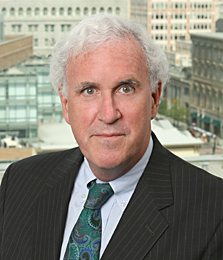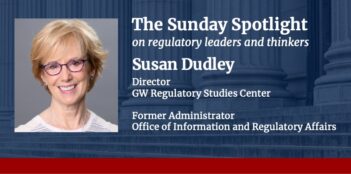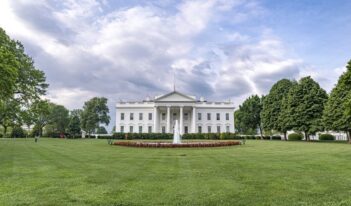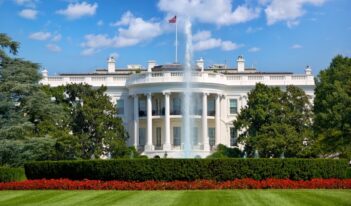
Regulatory law gives you an appreciation of how the world works.
On a personal level, I believe that the best reason to become a regulatory practitioner is that it teaches you about how the world really works.
I grew up in a remote area: Central Tennessee at the end of the era of de jure segregation. I have been able to use regulatory work to learn how humans in different and much larger settings organize themselves to try to solve complicated problems. I do not know who I would be without what I have learned through the regulatory work about how people act and how they try to accommodate conflicting interests and institutions.
Sometimes I might agree with the lyrics of an old Bob Seger song, that “I wish I didn’t know now what I didn’t know then.” But some examples of the projects on which I have been fortunate to work will show how a regulatory practitioner’s life is a constant learning process about a complex world.
Zebu Burgers
In the 1980s, the federal government sought to support the countries surrounding Nicaragua in the campaign against the Sandinistas by giving them a valuable quota to export beef to the United States. Unfortunately, the countries did not raise beef cattle but did have another bovine, zebu, which is similar to beef. As a result, the import regulations were amended to define “beef” as including zebu from these two countries. The major hamburger chains were the major purchasers of zebu. I learned that when I ate a 100% beef hamburger, that statement was true—in the regulatory sense of the term “beef.”
The Undocumented Alien Children Education Case
In the late 1970s, Texas first experienced large state outlays for undocumented aliens. The Texas state government was largely funded by sales and property taxes, which illegal aliens could not easily evade. Nonetheless, the state decided to bring a lawsuit to establish the right to deny benefits to people who could not produce documents proving that they were lawfully present in the country.
The largest category of expenses was for emergency room treatment, but the state decided not to assert a right to deny medical treatment to persons who could not prove legal residency status. Instead, the state fell back on the second largest category and claimed a right to deny a free public education to undocumented alien children. This choice proved vital to resolution of the ensuing lawsuit, which challenged the denial of education on equal protection grounds.
I filed an amicus brief in the Supreme Court in support of the children’s right to an education, and then learned the difficulty of coalition building. The two civil rights groups that would present oral argument in the case did not get along, and their staff members were precluded from scheduling meetings with each other. I learned that if I separately invited each group to my office at the same time and did not inform the representative that the other group was coming at the same time, then under their rules of engagement the members of the two groups could stay and tell me what their position would be, as the other group listened. This artificial arrangement, which was like a scene from a situation comedy, worked—it was how we planned the winning strategy in Plyler v. Doe, a 1982 decision that remains the principal case defining the rights of undocumented aliens.
The case ultimately turned on our ability to show that a majority of the undocumented alien children had been born here and were therefore U.S. citizens who had the right to remain permanently. We persuaded five Justices that denying these students an education because their parents had immigrated illegally would visit the sins of the parents on the children and deny them equal protection compared to peer-citizen children with documents. We also showed that keeping these children out of school would saddle the United States with a large underclass that would have no options in the modern world and would harm our ability to compete with other countries. We called this secondary argument a “pitch outside the strike zone”—an argument that would help persuade the Court, but that we did not expect to see in the opinion, and whose function would be to set up our equal protection argument.
The French Government Resembles the Federal Government.
I helped the French government defend itself in a criminal investigation in which the United States was considering the indictment of an instrumentality of the French State for a formerly state-owned bank that had failed a decade previously, been refinanced by the French government, and subsequently privatized in a manner that made French taxpayers liable for any fines.
I had the rare experience of working inside the French government with staff of the Ministry of Foreign Affairs and the Ministry of Finances. While in the federal government, I had helped address disputes between the Departments of State and Treasury. I learned that the dividing lines between agencies in these two governments were exactly the same and that relations between the French Ministries were troubled along exactly the same fault lines as for their U.S. counterparts. The foreign relations professionals regarded the finance experts as people who only valued life in monetary terms, and the finance professionals regarded diplomats as people who represented the point of view of foreign countries, rather than advocating for their own country to foreign states. I came to realize that this was because the agencies were given the same microscope with which to view the totality of human behavior and operated under the same intense parliamentary and media scrutiny.
The French agencies also wanted the same type of advice from their lawyers as did U.S. federal agencies, but there was one major difference. The French ministries assured me that their civil servants never leaked, and they never did. U.S. government lawyers have to pull their punches in providing written advice to their clients, for fear it will show up some day on the front page of the Washington Post. I had the thrill, for once in my life, of being able to tell agency policy officials what I really thought, a luxury afforded to no regulatory lawyer in the U.S. federal government.
Ketchup Is a Vegetable.
Government decision-making is a human endeavor, which means policy can be decided on criteria very different from abstract logic. In the early 1980s, many people asked how the regulatory review program established by President Reagan could possibly have cleared a final rule from the Department of Agriculture that declared ketchup to be a vegetable for purposes of providing children in the school lunch program a healthy meal. I learned how.
The OMB staff initially flagged the Agriculture rule for review because tomatoes are a fruit, not a vegetable. There were problems with the rule, but that was not it.
Seven people gathered in the Old Executive Office Building for the policy review – a young female special assistant to the OMB regulatory czar and six principals. Each of the principals was named Jim. OMB sent Jim Miller and Jim Tozzi; Agriculture sent its general counsel and his deputy, both named Jim; and the White House sent two Jims. The special assistant’s notes were an extended “Who’s On First?” routine. The discussion went: “Now wait a minute, Jim, when Jim and I had lunch, Jim said that Jim had no problem with this.” “When Jim and you had lunch?” “No, when Jim and I had lunch.” “And Jim had no problem?” “No, I hadn’t heard back from Jim, I had only heard from Jim, and he was fine with it.” After two hours of discussion, the principals made no progress in figuring out the problems with the rule and cleared it for signature.
A few days later, they found out what the problems were the hard way—when they read in the newspapers about the political controversy that erupted over the rule.
If You Are Interested in the Regulatory Process.
In the final analysis, all regulatory issues ultimately raise the same issue – how do human institutions try to solve problems under stress and in the public eye?
I never tire of learning about the complexities of this decision-making process, and I have been able to keep my passion for the public policy process through good projects and bad, and through good clients and bad. If I could hit the Reset button and start over again tomorrow, I would. At some point early in my working life, I found that regulatory work was the most direct way I could use my education to promote the public interest. That choice can lead to a really interesting life.
Anyone who has volunteered to contribute to The Regulatory Review—or who regularly reads its content—is at least a carrier of the same syndrome that I have. So I would encourage you to think about whether you would like to try working in the regulatory sphere. If you do, there is no substitute for going in government for a time, relatively early in your career, to learn about the decision-making process inside the belly of the beast. Government work provides a real opportunity to develop your own decision-making style and learn what approaches work best for you in different situations. It also provides a large enough number of problems to develop your skills and the freedom to make your own mistakes and learn from experience.
There is a tangible satisfaction from government service. Every day as I rode to work, I knew that I would be serving the public interest, no matter how hard that was to see from the trenches. I contrasted my experience with that of a friend from law school, a litigator who reported to work at a prestigious law firm and was assigned to help defend the flammable wheelchair. One evening spent listening to his stories about the litigation taught me how I wanted to approach professional life.
I hope my words about the experience of a regulatory practitioner will help persuade you to consider entering the regulatory field as an approach to learning the world and pursuing your interest in getting public policy right.
This is the final of a three-part series drawing on Mr. Cooney’s remarks as the inaugural keynote speaker at the Penn Program on Regulation’s February, 2012, regulation dinner at the University of Pennsylvania Law School. The full set of his remarks, The Regulatory Practitioner, can be downloaded here.




